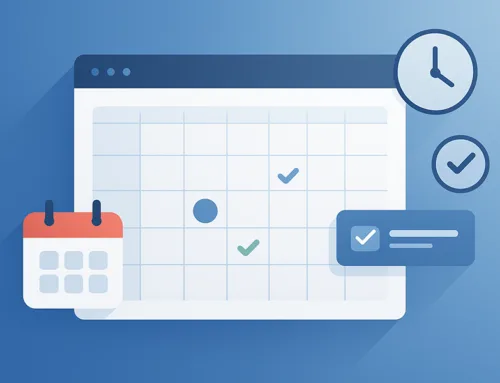How you present your product to your website visitors will highly influence whether they make a purchase, wishlist an item, or come back to your store. While the basic principles of product presentation are simple (show the product in the best light and include high-quality images), you will need to step up your game a bit if you want to improve your conversion rates.
Here are seven tactics for presenting your product that will help you turn heads and capture the attention of your visitors:
Highlight the Value
The most important tactic to bear in mind when presenting your product is value. This is what your customers will care about the most.
Is the product worth the price? Will it solve the customer’s pain point? What are its benefits? How can it be used?
These are the kinds of questions you want to answer. Focus on presenting the product as a valuable solution, as opposed to just a quality item. Clearly define who it’s for and what it does. Try to use as little sales speak as possible, and speak the language of your audience.
Let’s look at Love The Night Sky and see how they have distilled the value of their product down to a single sentence. Their value proposition is simple: helping backyard astronomers stargaze like professionals.

They tell you who their website and course is for – casual, backyard amateur astronomers. What is the value: you will learn to stargaze like a pro.
Try to achieve the same effect when you describe your own products. Write down a list of benefits and values, and try to put them together in as short a text as possible. Don’t worry too much about keyword optimization: you’ll naturally use all the right terms.
Provide Useful Ways to Filter
Many brands devote a lot of time to optimizing their product pages. And while this is certainly a step you need to take, you shouldn’t forget that this is not the only way customers will interact with your product. In fact, they are far more likely to first land on a product category page.
From there, they will want to find a solution for a specific problem. They won’t be interested in your entire stock, only in a few select items. The easier it is for them to find them, the better.
Take some time to perfect your search and filtering systems. How can you categorize your products? What search distinguishing parameters should you include in your filters? How do these items differ from each other, and what needs do they meet?
Check out this motorcycle exhausts category page. It doesn’t overwhelm you with dozens of filters. It gives you the basics: manufacturer, price, and sale. This is enough for someone who already owns a motorcycle and understands what they’re looking for to find the product they need.
You might think this is not enough for a beginner, but the product is not aimed at someone who does not have a certain level of knowledge. You would never randomly want to buy a motorcycle part.
Format the Information Clearly
In order to properly grab a customer’s attention, you will need to make sure that all the valuable information you feature on the page is presented well. This is especially important if the product is complex or unusual or if you need to provide a lot of information.
You don’t want a customer to have to read through a lot of text. Ideally, you’ll include bullet points and short sentences alongside longer, more descriptive paragraphs.
The best combination of the two will of course depend on the product itself. For example, if you are selling clothing, you don’t need to provide long descriptions. Snippy, bite-sized pieces of information will do.
But if you are selling an online course, you will need to write a description, detailing what is included, who it is for and what the expected outcomes are.
Look at the copy used for this course for crane operators. You get a detailed description of the standards the course meets, the level of certification, and who should take it. There’s also a short bulleted list that tells you what topics are covered so you can get an even clearer idea of what to expect.

Write Clear CTAs
The CTA tends to be a difficult element of website design for most brands. While it’s an incredibly simple and short piece of text, it can be really difficult to craft one that converts.
You’re looking for a blend of clear and actionable. A simple “click here” and “buy now” are acceptable options, but they’re also somewhat dull and unoriginal. Try to write something on-brand that will be very clear about the expected result and sound positive.
Take a look at this low carb meal plan page. It has two CTAs. The first one is “get started with our low carb plans” – it’s actionable, it takes ownership, and it emphasizes what the product is. The other one is “try low carb meal plans for 14 days.” This one highlights one of the benefits: you get a 14-day free trial.

When writing CTAs, focus on the value and the benefits of conversion. What is the customer getting? How will converting make their life better? Use clear terms and subtle action words. Make it absolutely clear what clicking on the button will do.
Expand Your Product Gallery
Product images will naturally be a part of your presentation strategy. You already know they need to be high quality, show the product from a variety of angles, and load quickly and smoothly across all devices.
You should also consider expanding your product gallery to feature more than just the kinds of images most customers expect. Maybe you can add a video showing the product in motion? Or maybe you can feature customer testimonials or how-to videos?
The more informative you can make this visual content, the easier it will be for shoppers to choose the right product for their needs.
Take a look at this Breville coffee maker. It features numerous photos, showing the product thoroughly, but it also shows three videos, two of which teach you how to make an extra good coffee with the machine.
What could you add to your product gallery? A slide with bullet point information can be a great addition as well, as it is likely to be seen. You can even recommend other products in the last slide, especially if they go well with the item currently being looked at.
Provide Plenty of Visuals for Digital Products
If your product is not tangible, but digital, you still need to make sure that it is displayed from all angles, so to speak.
Whether you are selling a course, a tool or an ebook, you want to show as much of it as is possible. It will help the customer relate to it better, and they will better understand what it is they are buying. If they can get to know the interface, they will be able to gauge if the product is right for them.
Screenshots and demo videos are a great tool to use. The former will help your branding efforts, while the latter is an excellent sales and conversion tool. Make sure both are included seamlessly on the page.
For example, Duda did a great job with their visuals. They feature several videos and numerous images. The video in the hero section shows you the tool’s capabilities and UI, which demonstrates its ease of use and simplicity. The visuals are enhanced with the copy, and not the other way around, so the product is truly allowed to speak for itself.

Prove That It Works
Finally, you will need to include some sort of proof that your product does what it says it does. If you are selling something tangible, you can show it in action or highlight glowing customer reviews. If you are selling a digital product, case studies can be a great asset.
Any awards and media coverage will also work well. You can also leverage third-party reviews, any research you may have done, and all the certificates you have. Make sure that they’re easy to spot on the page but not the main focal point.
For example, Giosg shows you the brands they have worked with in their hero section. They tell you how many there are and display the logos of some of the biggest ones. Further down the page, they also feature customer success stories, which show cold hard figures and the results customers have achieved with them.

Think about the proof that is most likely to influence your customers. What are their conversion obstacles? What can you do to alleviate them?
Wrapping Up
Have you already considered some of these tactics on your website? Do you think there is room for improvement, and how could you best incorporate them?
Before you start making any major changes to your website, take some time to consider the needs and pain points of your target audience. How can you most effectively cut to the chase and give them what they are looking for?





